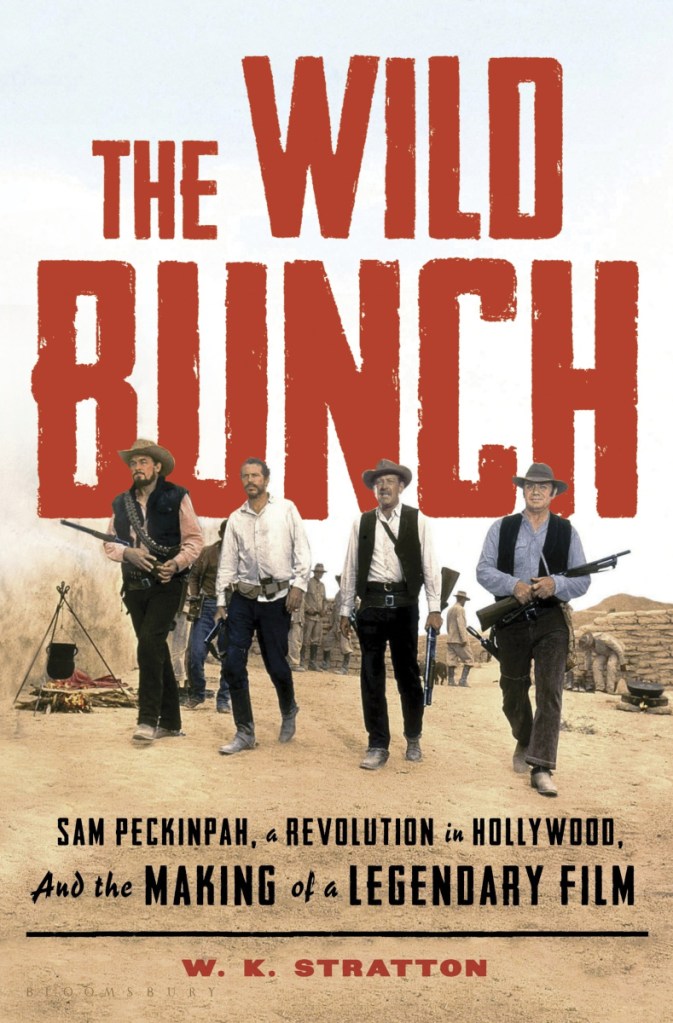In 1969 the Western movie enjoyed its best year in a decade before drifting off onto a side trail of American culture.
There was “True Grit,” showcasing an Oscar-winning performance from the Western’s greatest star, John Wayne. The buddy movie “Butch Cassidy and the Sundance Kid” offered Paul Newman and Robert Redford with a mixture of ’60s-style irony and cool. Italian filmmaker Sergio Leone’s latest spaghetti Western, “Once Upon a Time in the West,” came over from Europe to roil the genre’s conventions.
And there was director Sam Peckinpah’s “The Wild Bunch.” No one had ever seen anything like its opening and closing shootouts – bloody and balletic with explosions erupting and bodies flying in slow motion. Coming during the war in Vietnam and political violence at home, its visceral scenes overshadowed a multilayered story. Critics were divided over whether it was an outstanding film or the year’s worst.
In his detailed and passionately argued history of “The Wild Bunch,” writer W.K. Stratton takes the debate to a higher level and convincingly positions the film as the best Western ever made – and among the greatest of movies.
Stratton collects the kinds of elements required for a lively movie backstory: a talented if irascible director, quirky cast and crew members, a difficult location shoot and a controversial reception by moviegoers and critics. Best of all, he recounts how an idea becomes a film and the creative, economic and fate-driven roadblocks it faces.
A stuntman, Roy N. Sickner, imagined a story about gringo outlaws robbing a train in the United States and escaping to Mexico. Screenwriter Walon Green drew on his own love of Mexican history and culture while shaping the story. Both Sickner and Green wanted their wild bunch to be tough outlaws who lived by a code of honor, the Mexico where they find love and death as free of movie cliches as possible.
That was a goal for Peckinpah, too, when he reworked the script. Another aficionado of Mexico and its people, the director cast stars of Mexican cinema for small but memorable roles to give the movie a verisimilitude unusual for the genre. He also sought to present them as characters in a broader spectrum rather than stereotypes.
Starring Oscar-winners William Holden and Ernest Borgnine, “The Wild Bunch” was a second chance for Peckinpah. His top-notch 1962 Western “Ride the High Country” had boosted his standing, yet the critical and box-office failure of 1965’s “Major Dundee” combined with cost overruns and his volcanic personality turned him into an industry pariah. A hard-drinker, Peckinpah generally behaved during filming – that meant drinking beer, mostly – and achieved a creative peak.
Within a month of its release Warner Bros.-Seven Arts ordered cuts – not to ease the controversial violence in “The Wild Bunch” but to make the movie shorter for more screenings each day, the kind of decision that sent Peckinpah into a rage. In later years, TV showings would provide a sanitized version. Not until 1995 was a restored version rereleased – to fresh acclaim.
Send questions/comments to the editors.



Success. Please wait for the page to reload. If the page does not reload within 5 seconds, please refresh the page.
Enter your email and password to access comments.
Hi, to comment on stories you must . This profile is in addition to your subscription and website login.
Already have a commenting profile? .
Invalid username/password.
Please check your email to confirm and complete your registration.
Only subscribers are eligible to post comments. Please subscribe or login first for digital access. Here’s why.
Use the form below to reset your password. When you've submitted your account email, we will send an email with a reset code.